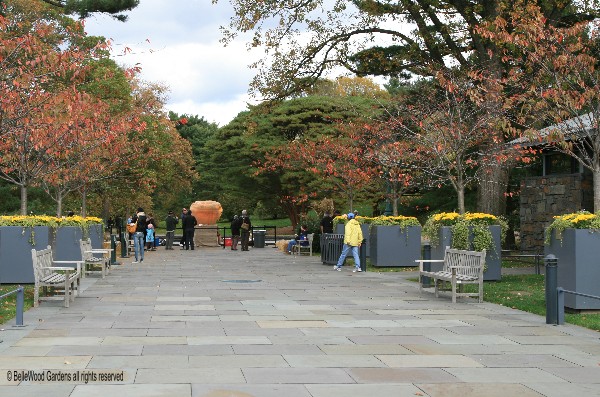
Friday, 29 October 2010
It's The Great Pumpkin
October ends and it is time for Halloween. That means children disguising themselves in costumes and going off trick or treating. And pumpkins, pumpkins carved into Jack o'lanterns. These used to be simple things with two triangles for the eyes, another for the nose, and a snaggletoothed grin. It's different today. The pumpkins are bigger and the carving more elaborate, even fantastical.

What's this I see in the distance? There's something orange and monstrously large by the reflecting pool
at the New York Botanical Garden. Could it be - Yes! It's the world's biggest pumpkin. Weighing in
at a impressive 1,810.5 pounds, this behemoth is a whopping 15 feet in circumference and waist high to
the typical adult. Loaded in a pickup and driven cross-country from Wisconsin by its grower, Chris Stevens
of New Richmond, after first making an appearance on television it arrived here at the botanical garden
were it will be carved, shaped and crafted into a world record Jack o'lantern. But first, must save the seeds.
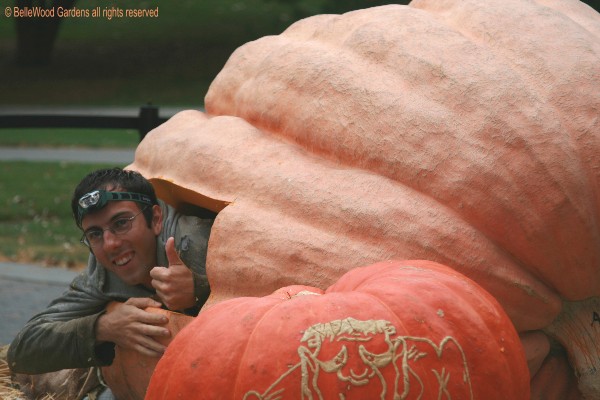
.
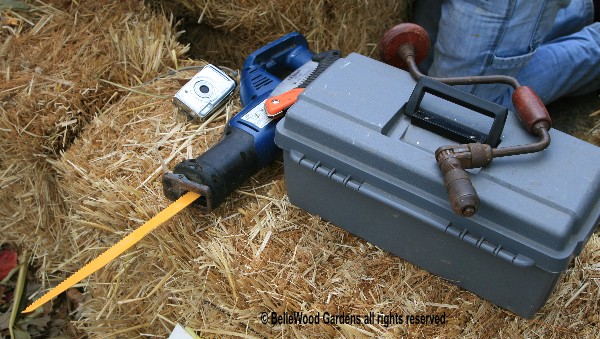
Tools are needed to carve a pumpkin. The more elaborate the carving, the greater the diversity of tools.
Your least favorite kitchen knife won't do it. And given the thickness of the flesh, a small power saw
to cut through the rind is a necessity. But for the detail work - that is all done with hand tools.
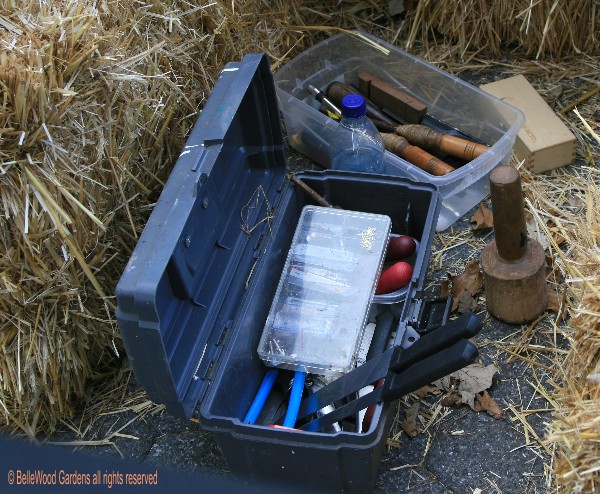
.
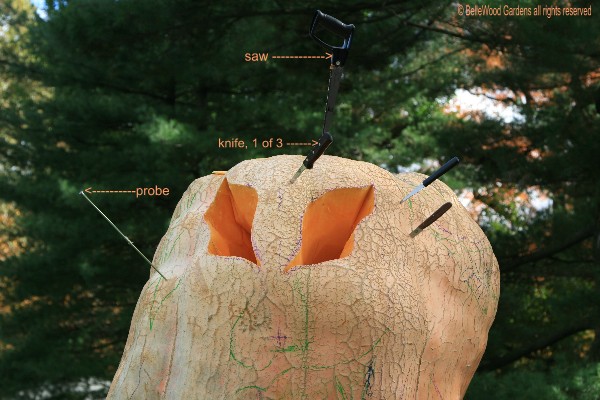
Scott Cully used to grow pumpkins, in Connecticut. One year he had a 400 pound pumpkin. Which
he decided to carve. That was 23 years ago and he's been carving pumpkins ever since. It will take
him, at the rate of an hour per hundred pounds, about two days to carve the mammoth pumpkin.
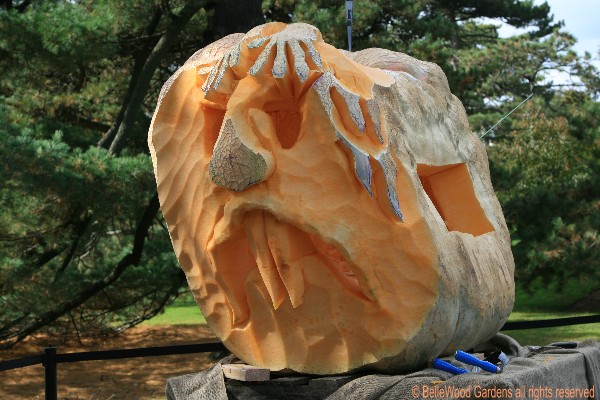
.
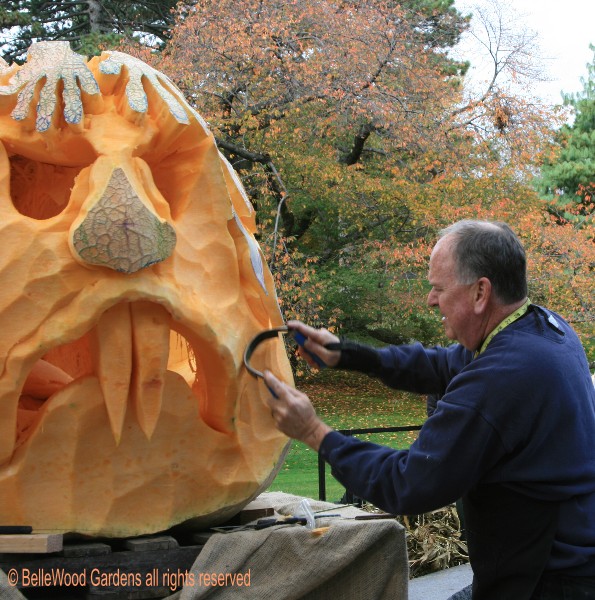
Here Scott's using a draw shave to peel off chunks of pumpkin flesh. Periodically he stops to gently
thump the area he's working on, judging if there's sufficient remaining flesh to support the design.
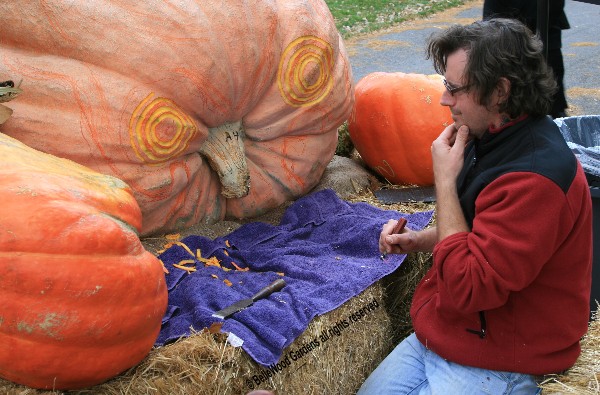
But the monster pumpkin is not the only one on display. Second and third runners up for Guinness 2010
records are also being embellished. Michael Anthony Natiello, the botanical artist who created
the 500 pumpkin display highlighting the Halloween Hoorah at The New York Botanical Garden's
Everett Children's Garden, was carving the 1,725 pound pumpkin grown by Ken Sweet of
Washington, Michigan. Same seed parent, 1161 Rodonis, different pollinator, 1303 Sweet
The Great Pumpkin Commonwealth is the world-wide governing body with standardized measurements of weights and fairness of competition. Their supporting clubs, and growers hold annually run festivals and weekend events each summer and fall at over 80 official weigh-off sites worldwide. These sponsored sites, ever popular, are attended by hundreds of thousands. The GPC strives to foster an environment friendly approach to growing giant pumpkins, using basic organic techniques that have shown extreme fruit development can be obtained without harming the environment. All the winning growers used the RTI Industries giant pumpkin program to obtain these weights and their world records.
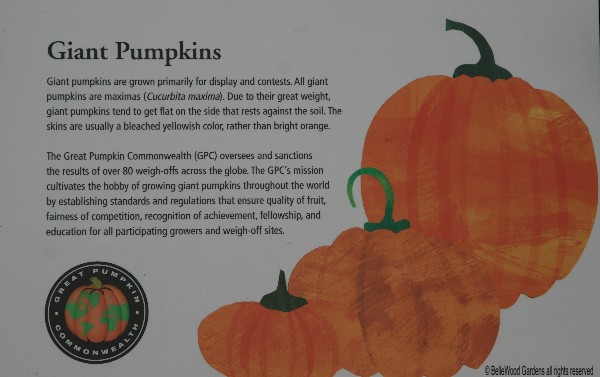
How does one grow a giant pumpkin? Well, it's not as simple as just shoving a pumpkin seed in the ground and letting it grow. Giant pumpkins are something different, something special. It starts with a seed, but not just any seed. These have pedigrees. Giant pumpkins are grown from Atlantic Giant seed because they have a longer growing season than typical pumpkins. Chris Stevens used 1161 Rodonis for the plant, then pollinated the flower with 1421 Stelts. He planted his pumpkin seed on April 18. Good growing weather is important, with lots of hot weather and frequent rainfall. He fed his plants with cow manure, fish emulsion, seaweed. And microorganisms (something called Pumpkin Pro from Extreme Pumpkin. It's a fungus that attaches the pumpkin plant's roots and allows them to absorb phenomenal amounts of nutrients.) This pumpkin started growing on June 27. Once it got going it packed on an average of 30 to 40 pounds a day. It started out round but when it reached about 220 pounds it began to flatten under its own weight, resembling a deflating balloon. But it grew and grew and grew. It got watered, copiously, if rainfall was sparse. And when it was cut loose on October 8 . . .
It got weighed in and certified as the winner, a world record at 1,810.5 pounds, a Guinness record. That's 85 pounds heavier than the previous record, a 1,725-pound pumpkin grown last year in Ohio.
The seeds will be harvested and return with Chris Stevens to his home, located in western Wisconsin. Almost as soon as word of his prizewinner reached the giant pumpkin growing community he received over 100 requests for seed. As do most giant pumpkin growers, he intends to donate the seeds, in his case to the St. Croix Valley Growers Association, where he is a member. The association will, in turn, sell the seed to help fund its efforts. Normally sold at internet auctions each seed will sell for an estimated $750.
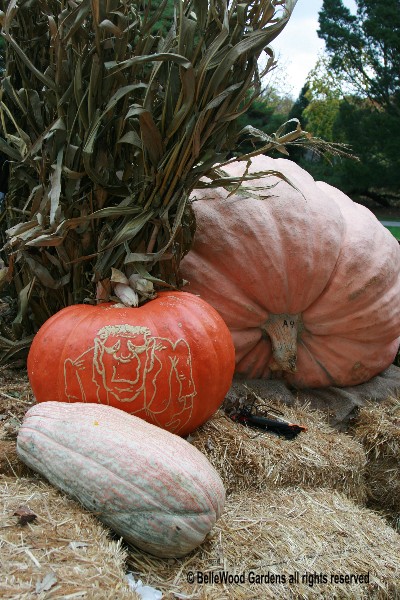
If you don't have room for growing a giant pumpkin in your backyard
there's another way you can embellish pumpkins. Scarifying them.
Along about August scratch a design or message into the pumpkin's
rind. Not too deep, not into the flesh. Just scratch the skin. Then
by the time halloween arrives at October's end just see the results!
